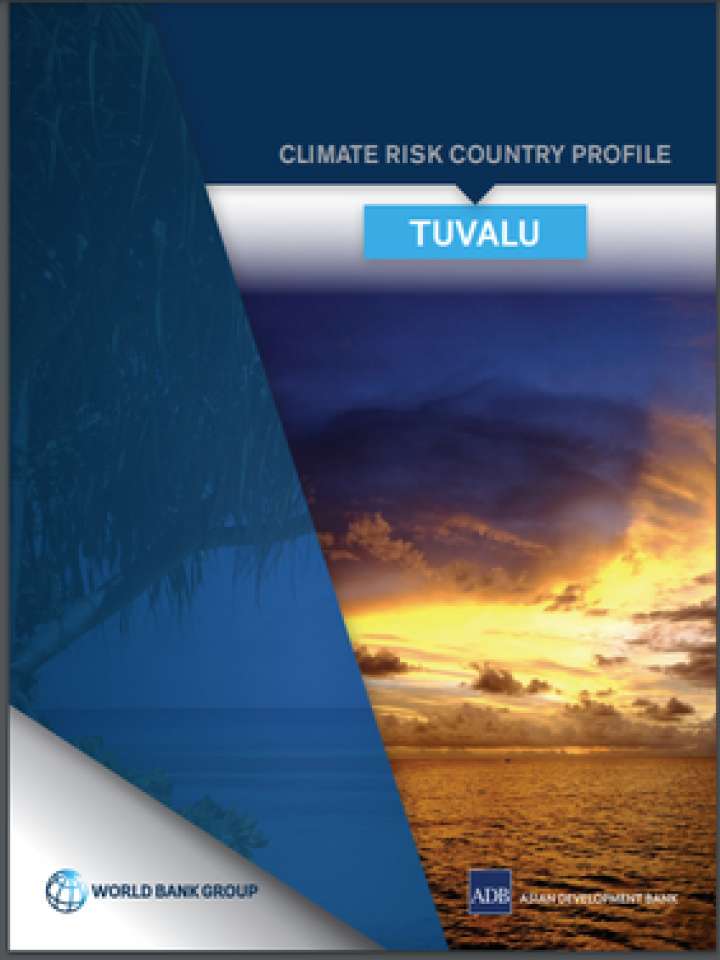Climate risk country profile: Tuvalu
This profile is intended to serve as public goods to facilitate upstream country diagnostics, policy dialogue, and strategic planning by providing comprehensive overviews of trends and projected changes in key climate parameters, sector-specific implications, relevant policies and programs, adaptation priorities and opportunities for further actions. Tuvalu is a microstate of the Polynesian sub-region of the southern Pacific Ocean which consists of nine atolls. Fishing and fishing licenses provide 42% of national revenue, with other income sources including its internet domain, the national trust fund, and remittances from family members abroad. The prosperity of Tuvalu’s population depends upon effective management of climate changes, variability, and disaster risk.
This climate risk profile offers a number of key messages, including:
- Tuvalu’s island groups have experienced historical warming of around 0.8°C since 1980.
- Future trends in warming are obscured by the inability of climate models to accurately simulate trends at sufficiently small spatial scales. Warming is likely to take place at a rate slightly lower than the global average. On the highest emissions pathway warming of around 2.8°C is projected by the end of the century.
- Potential threats to human well-being and natural ecosystems include increased prevalence of heatwave, intensified cyclones, saline intrusion, wave-driven flooding, and permanent inundation.
- Tuvalu faces a potential long-term threat from permanent inundation and wave-driven flooding, and some studies have suggested that many of its low-lying islands will become uninhabitable within the 21st century.
Explore further
